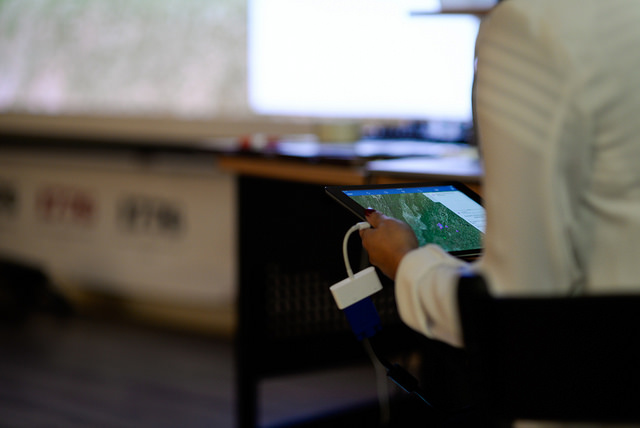Long gone are they days where workers are tied to their desks. In fact, people increasingly rely on mobile devices to access information – especially those in field staff positions. Those mobile workers require fast, reliable location-based apps to get their jobs done.
But how do you do that effectively? At GovLoop and Esri’s Meet Up we explored easy-to-configure mobile apps that you can quickly put into the hands of mobile workers.
These apps enable people, who do not necessarily have any GIS experience, to do mapping, spatial query, sketching, GPS integration and GIS editing.
Three Maps on Apps Case Studies:
1.Nick Rodriguez, Senior Assistant Case Manager for National Center for Missing and Exploited Children (NCMEC) demonstrated how NCMEC responds to critical missing child cases by deploying members of their Team Adam squad to the field equipped with iPads and Collector for ArcGIS.
“Esri has changed the way our team works by using the Collector iPad app. The app allows law enforcement to track direction of travel, show specific peices of evidence and overlay NCMEC data. We can throw all of that data up on a map. In the past, this data was given in 500 page reports. We have been able to replace those clunky reports with an interactive and live map,” explained Rodriguez.
In 2011, the Virginia police were able to use the app to help track a missing 9-year old boy named Robert Woods. “That case had more than 1,200 volunteers who showed up to assist in the search. Law enforcement needed to be able to track their progress, the collector app was able to facilitate the search,” said Rodriguez.
2. Mary Biear, President and CEO, Mackson Consulting, demonstrated an innovative mobile field inspection app that can be configured to address data collection, federal reporting, and data management requirements.
“The FDA wanted to optimize capabilities around field inspections,” said Biear. “But the FDA also had some very specific requirements, the application had to be usable offline and it had to be PIV secured.”
The FDA agreed to use a yet-to-be-publicly released beta app to test digital field collections. The final product – FIT-Maps automated 12 of the 13 step inspection process for FDA site inspectors.
“When they leave the facility the FDA wants to make sure their inspectors have all the evidence they need – things like photographs, date stamped, and signed documents,” said Biear. “With the app they have all the evidence they need to secure a compliance action.”
The FIT-MAP took just over a year to complete and $1.1 million dollars.
3. Earl Eutsler, District of Columbia (DC) Urban Forestry at District Department of Transportation (DDOT) presented how his team leverages data collection apps and dashboards to ensure service delivery and track work orders, which has greatly enhanced how the agency delivers services to the DC citizens.
“Each year we get about 7,000 requests for tree inspections. With the app we were able to optimize our team structure to create an even distribution of tree inspections,” said Eutsler.
In order to create the applications, each of our case study speakers used Esri technologies:
- AppStudio for ArcGIS lets you convert your map into sleek mobile apps that work on many platforms – no coding required. Deliver apps for Android, iOS, Windows, Mac OS X, and Linux and publish them to app stores in a snap.
- Navigator for ArcGIS gives field staff access to your organization’s data so they can navigate directly to assets, whether they are on the commercial street network or not. It works seamlessly with apps like Collector for ArcGIS, and it gives staff the ability to get directions and search for assets in a disconnected environment.
- Survey123 for ArcGIS is a lightweight, intuitive app that puts location-based surveys on mobile devices. Staff can collect data and then use the power of ArcGIS to analyze facts, gain insights, and make the best decisions possible.
How could you use similar app technology to make your office more efficient?
